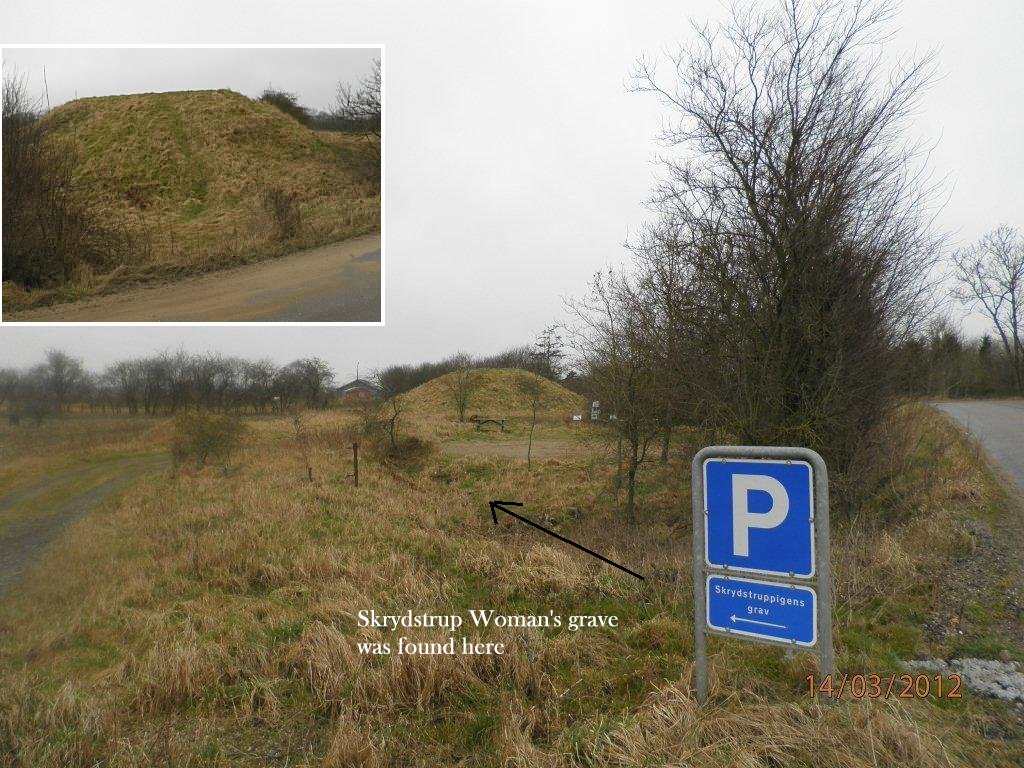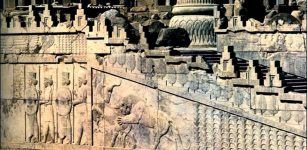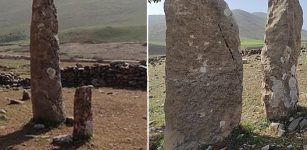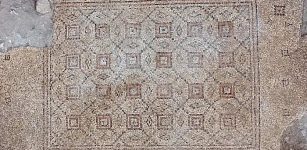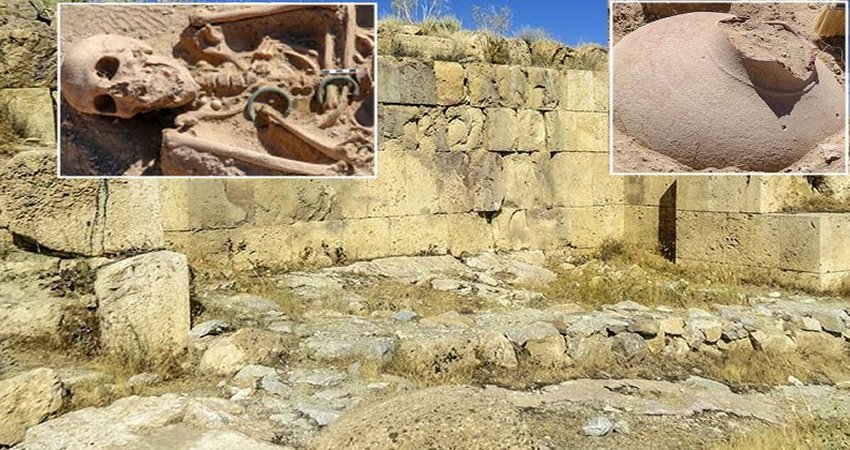Skrydstrup Woman: Bronze Age Woman Who Came From Abroad
MessageToEagle.com – Skrydstrup Woman was found on the Skrydstrup field, one kilometer sourthwest of Vojens in southern Denmark. The discovery was made in 1935. She was buried around 1300 to 1200 BC.
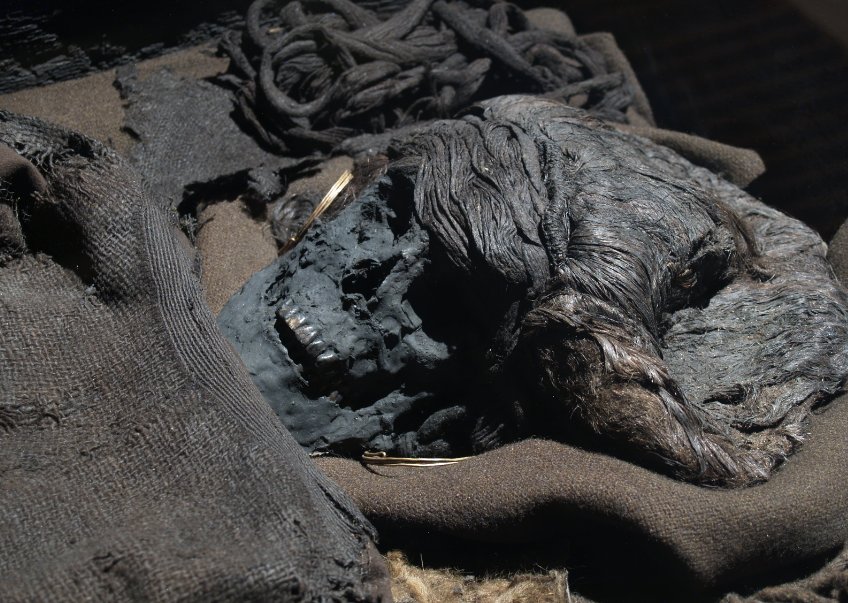
She lay in the coffin on a cowhide, clad in a blouse with albow length sleeves, wrapped and covered with a piece of woven woolen cloth. A gold ring was placed round each ear. Next to her head lay an intricately-worked cap made in the technique called “sprang”.
But the most striking feature was the woman’s coiffure, a high “rococo” style which must have taken several hours to fix.
See also:
Mystery Of The Black Forest Egtved Girl: She Was Not From Denmark
Bog Body Of The Elling Woman: Was She Sacrificed To The Gods Because Of Climate Change?
DNA Can Solve The Mystery Of The Bocksten Man – A 650-Year-Old Murder Case
Unsolved Mystery Of The Huldremose Woman: One Of The Best Preserved Bog Bodies Ever Found
The coiffure and the gold rings, the oak coffin and the barrow, all indicate that the Skrydstrup Woman belonged to a socially well-situated family.
Researchers from the National Museum of Denmark have discovered she was not Danish and analyses suggest she could come from the Czech Republic, Germany, France or Sweden.
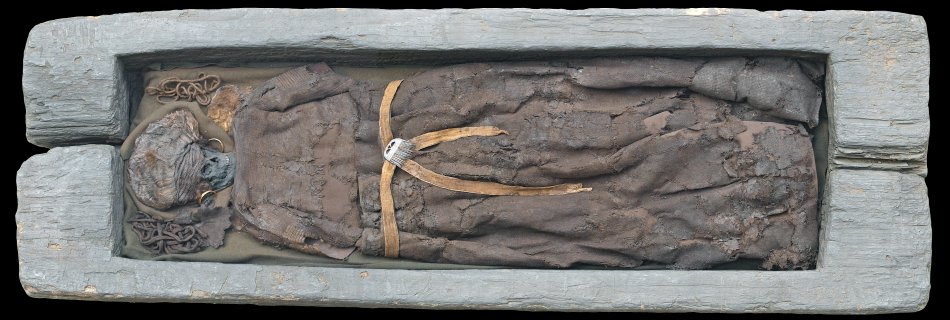
This mysterious woman traveled far and wide and so did the famous Egtved Girl, discovered in 2015 in Denmark and there are some similarities between these two ancient women.
Egtved Girl and Skrydstrup Woman lived at approximately the same time period and both died at a young age – 16 to 18 years. They were both buried in oak coffins under a burial mound, which was an elite way to be buried. And they were both foreigners. Egtved Girl traveled much in her later years, and only spent a short period of her life at Egtved – probably only a few months – where she died. Skrydstrup Woman, on the other hand, came to Skrydstrup at the age of around 13 or 14, she made just one long journey before she died and was buried in what is now Denmark.
She was buried in the center of a burial mound. All of this points to a woman of great importance with an elegant queen-like figure.
She was approximately 170 cm tall (about 10 cm taller than other women), dressed in beautifully embroidered clothes, with big gold earrings draped over each ear.
Close to where Skrydstrup Woman was buried, archaeologists have found two large long-houses. One of which is the largest known “three-aisled” houses from the early Bronze Age—it was 500 square meters in size.
The area where she was buried is known to have been a center of wealth, due to the large number of Bronze Age burial mounds and impressive long-houses that have been excavated in the area. Lots of bronze and gold have also been found in the area.
Two men, whose relation to her is not yet known, were also found buried on the side of the same mound.
“Skrydstrup Woman travelled once and stayed in the Skrydstrup area the rest of her life. So perhaps she came to make an alliance,” said Professor Karin Frei from The National Museum of Denmark who is behind the discovery.
“Suddenly, these women have a much larger role in this society, because they’re outsiders with new knowledge and know-how that would have been of great value. I’m beginning to think that they had a greater importance than we have previously attributed to them…” Frei said.
Unlike Egtved Girl, analyses of her hair, teeth, or nails did not reveal any serious illness or malnutrition.
“In all probability she probably died of an infection: flu or some virus that did not show up in her skeleton. It would show up in the blood, which obviously isn’t preserved today,” said Marie Louise Jørkov, researcher from the Department of Forensic Medicine at the University of Copenhagen, Denmark, who conducted the analyses.
MessageToEagle.com
Expand for references
